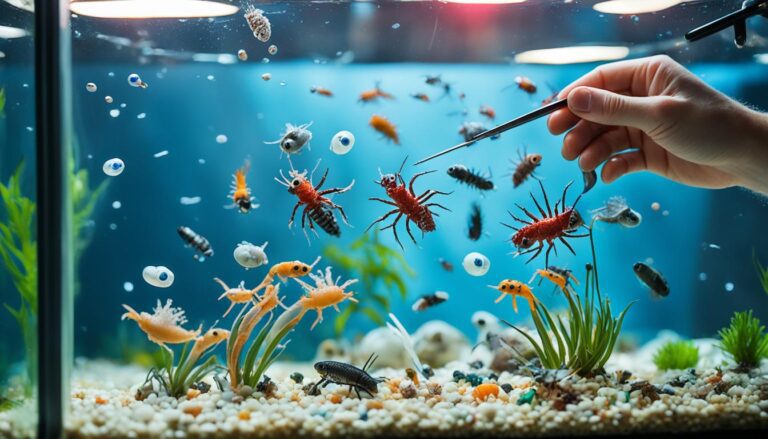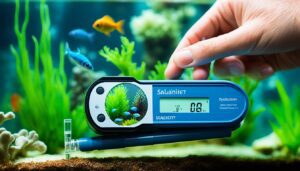As someone who’s really into reef tanks, I understand how vital it is to keep everything in balance. It’s almost like running a mini ecosystem, and when something like planaria flatworms sneaks in, it can really mess things up. These little flatworms, only about 0.1 to 0.6 inches in size, can slip into your tank without you even noticing, but once they’re in, they can quickly become a big issue. They upset the food chain, especially affecting delicate creatures like corals and shrimp.
The first step to fighting off planaria is knowing how to spot them. Even though they’re small, their rapid reproduction is what makes them dangerous. Overlooking just one of these flatworms can lead to an infestation, with hundreds showing up seemingly out of nowhere. The white ones, in particular, are pretty aggressive, and if your tank has too much food or poor hygiene, it only makes the problem worse. Those conditions give them exactly what they need to thrive.
I’ve developed a plan to deal with planaria and keep my reef tank in top shape. It starts with prevention—keeping the tank clean and the food under control. But when I do spot them, I’m not afraid to step in with stronger measures. I’ve used Fenbendazole before, which is a safe and effective way to get rid of these pests. Between mechanical methods like siphoning them out, chemical treatments, and biological controls, I can not only remove the flatworms but also keep my reef environment healthy and vibrant.
By staying proactive and using a mix of strategies, I make sure my reef tank stays a thriving, colorful world, without pests like planaria taking over.
Understanding the Threat: What Are Planaria Flatworms?
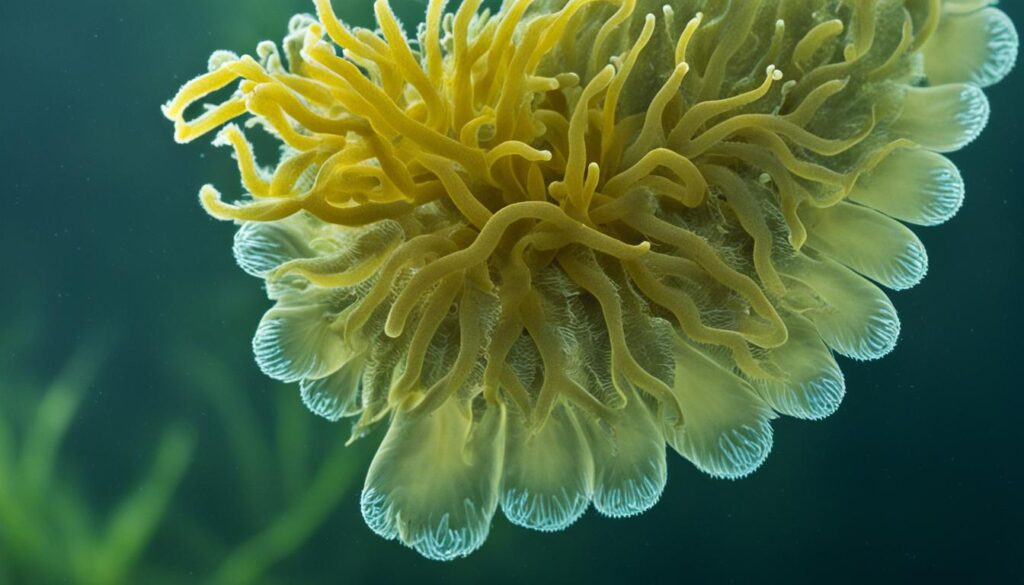
Maintaining a healthy reef tank means being aware of potential threats, and planaria flatworms are definitely one to watch out for. While some species of planaria are harmless, others can wreak havoc on your aquarium’s ecosystem.
These flatworms belong to the Turbellaria class and are famous for their ability to regenerate. It’s an impressive trait, but some species use this power for less helpful purposes—like feeding on coral. This can seriously damage or even kill coral, disrupting the delicate balance of your marine environment.
But planaria don’t just target coral. They also compete for space and food with other small tank inhabitants, reducing biodiversity and threatening the health of your entire aquarium. That’s why keeping them under control is so important for a thriving aquatic ecosystem.
The tricky part is spotting these pests early. Planaria are great at hiding and multiply quickly, so by the time you notice them, there could already be a problem. Detecting them as soon as possible is essential to prevent them from taking over your tank.
Interestingly, planaria are more than just pests—they’re also fascinating creatures for scientific study. Their ability to regenerate has helped scientists better understand how animals heal, similar to research on how zebrafish can regenerate heart tissue. Planarians can even regrow eyes, which makes them a subject of ongoing research in regenerative biology.
Ultimately, knowing about planaria and other Turbellarian flatworms is key to keeping your reef tank balanced and beautiful.
Spotting the Invaders: How to Identify Planaria
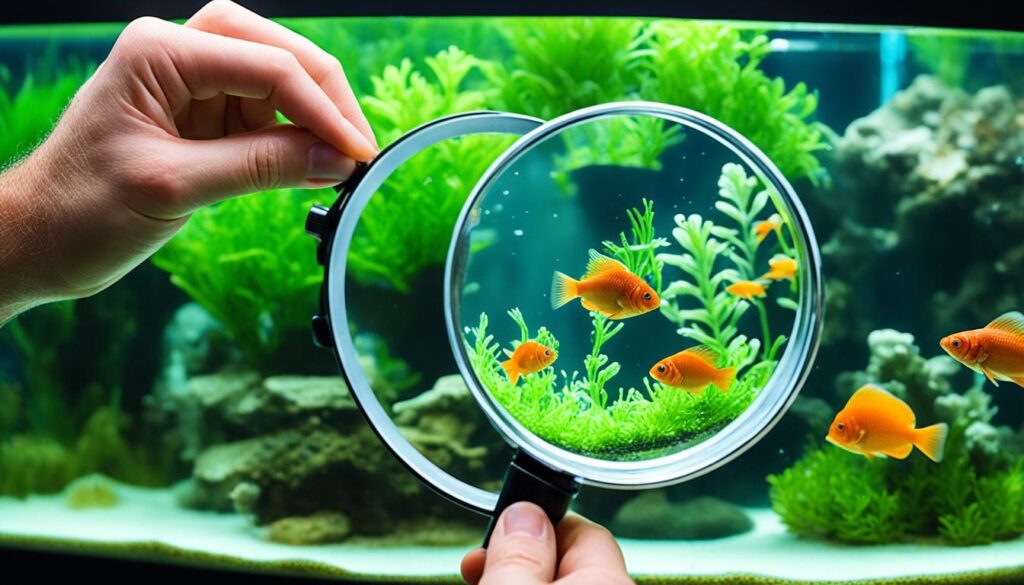
Being able to spot pests like planaria early is crucial for tackling aquarium problems before they get out of hand. These flatworms have some unique characteristics that make them stand out from other creatures in your tank.
Recognizing Planaria by Shape and Size
One of the easiest ways to identify planaria is by their distinctive shape. They have a long, flat body that almost looks arrow-shaped, with both the front and back being narrower than the middle. These flatworms are usually just a few millimeters long, and they’re easy to spot if you have a light-colored substrate in your tank because they tend to stand out against it.
Color Variations of Planaria Flatworms
Their color can also help you recognize them. Planaria come in a variety of shades, from almost transparent to brown or even rust-colored. Their color often depends on what they’ve been eating and the conditions of your tank. So, keeping an eye on any unusual flatworms crawling around will help you spot them quickly.
Behavioral Traits That Help Identify Planaria
Their movement is another clue. Planaria glide smoothly across surfaces in a very fluid way. They’re also known for staying away from light—this behavior is called negative phototaxis. If you see flatworms hiding in the darker areas of your tank or moving in a smooth glide, it could very well be planaria.
By paying attention to their shape, color, and movement, you can quickly spot these pests before they become a bigger issue. Regular tank maintenance and keeping an eye out for these signs are key to maintaining a healthy and planaria-free aquarium.
The Impact of Planaria on Your Aquarium Ecosystem
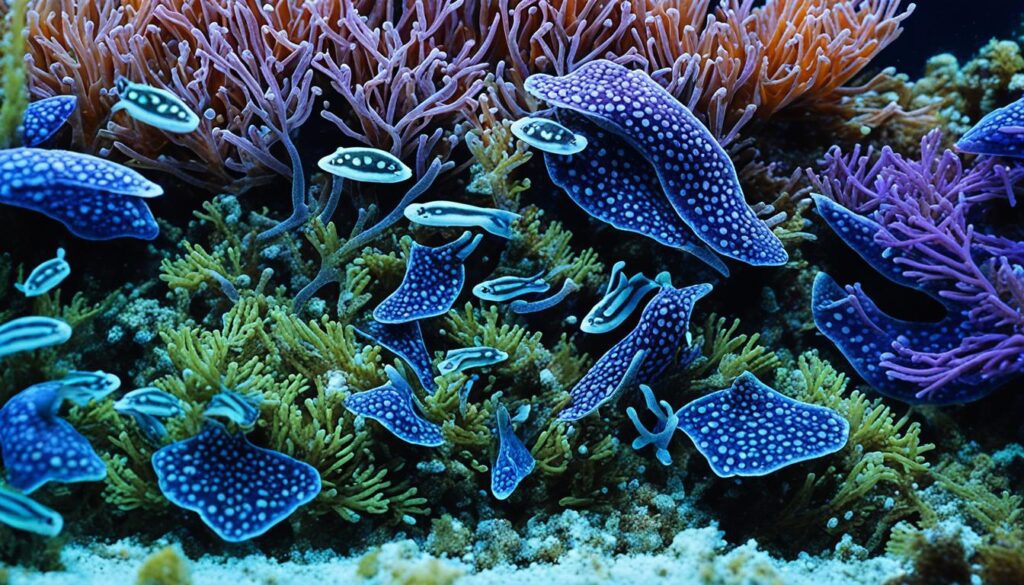
Knowing how planaria affect your aquarium is key. These tiny flatworms can change the aquarium ecosystem balance. They harm corals by eating their mucous and tissue. This also means they take resources from other small creatures, shifting the ecosystem.
An invasion of planaria brings several issues:
- Predation and Stress: They target small or weak shrimp, especially during molting, with a predation rate up to 30%. Around 40% of shrimp get stressed, which may reduce their lifespan and breeding success.
- Competition for Food: Planaria eat the same food as fish and shrimp. This can cut food opportunities for your pets by half.
- Water Quality Decline: A high number of planaria can boost ammonia and nitrate levels by 60%. This harms water quality and all living things in the tank.
Method |
Effectiveness |
Impact on Tank |
|---|---|---|
Manual Removal |
70% reduction |
Needs regular implementation |
Biological Control |
65% success rate |
Introduces natural predators |
Chemical Treatments |
Up to 80% elimination |
Follow dosage carefully to avoid harm |
Preventive Measures |
Up to 85% decrease in outbreaks |
Enhances overall tank health |
To fight planaria, think about adding natural predators like certain wrasse. They can keep planaria in check. Removing planaria by hand and keeping up with tank maintenance also helps a lot. This maintains the aquarium ecosystem balance.
In the end, planaria’s effect on an aquarium is complex. It impacts the health of reef tank inhabitants and the aquarium ecosystem balance. Always watch your tank closely. Use preventive steps and correct treatments to keep everything healthy and beautiful.
Strategies for Removing Planaria
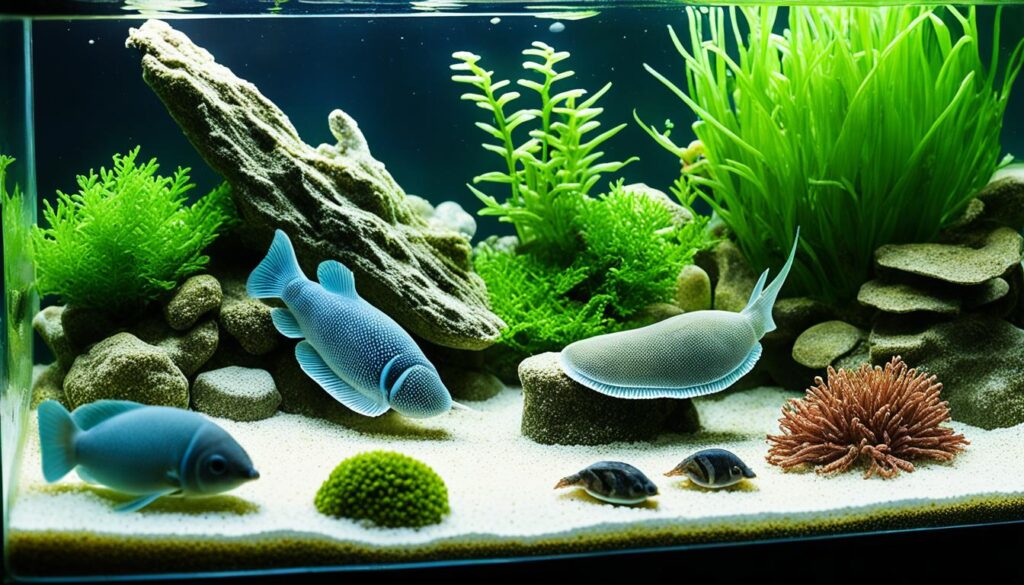
Getting rid of planaria is key for keeping reef aquariums healthy and good-looking. Learning different ways to control planaria helps us tackle the problem. This way, we won’t harm the delicate balance of marine life.
Mechanical Removal Techniques
One of the main ways to deal with planaria in your tank is through mechanical removal. You can use a siphon or a turkey baster to get rid of planaria you can see. Along with this, changing the water regularly helps. It lowers the nutrients planaria thrive on, leading to a cleaner tank.
Chemical Methods: Safe Treatments for Your Tank
Chemicals offer another way to fight planaria. Products like “Flatworm Exit” can kill planaria while keeping other creatures safe. Make sure to follow the directions carefully. Also, change the water after to remove any leftover chemicals. This keeps your tank healthy overall.
Biological Control: Leveraging Natural Predators
Using natural predators gives a natural solution to the planaria problem. Fish like Angelfish, Gourami, and Tiger Barb eat planaria. This method controls planaria numbers and makes your tank more diverse.
Using mechanical removal, chemical treatment, and natural predators together works best for managing your tank. Tailoring these methods to fit your tank’s needs helps keep it free of planaria.
Method |
Description |
Benefits |
|---|---|---|
Mechanical Removal |
Utilizing tools like siphons to physically remove planaria. |
Immediate removal of visible planaria; reduces reliance on chemicals. |
Chemical Treatment |
Applying safe, targeted medications to eradicate planaria. |
Effective for widespread infestations; fast acting. |
Biological Control |
Introducing natural predators into the tank. |
Continuously manages planaria populations; enhances biodiversity. |
Stay alert and keep an eye on your tank for planaria. Doing this lets you manage and maybe even get rid of these pests from your tank.
Preventative Measures to Keep Planaria at Bay
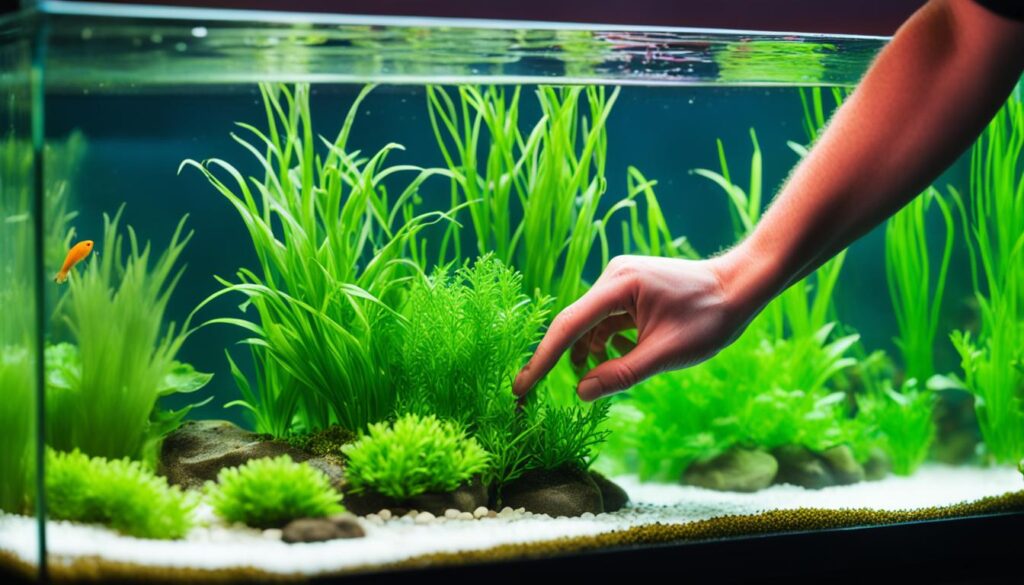
To keep your aquarium planaria-free, there are a few key steps that will help prevent infestations and create a healthier home for all your aquatic pets. By focusing on quarantine practices, maintaining optimal tank conditions, and sticking to regular maintenance, you can stop planaria in their tracks.
Quarantine New Additions to Your Tank
Before adding any new plants, corals, or fish to my tank, I always quarantine them for 2-3 weeks. This gives me time to inspect for planaria or other pests before they have a chance to invade my main tank. Quarantining new additions is a simple but effective way to catch any potential problems early on.
Optimizing Tank Conditions to Discourage Planaria Growth
Maintaining great water quality is one of the best ways to keep planaria away. These pests thrive in poor water conditions, so it’s important to test your water regularly and make any necessary adjustments. Strong water flow and a reliable filtration system are also key. Personally, I test my water weekly to ensure it’s just right for my tank inhabitants but not ideal for planaria.
Routine Tank Maintenance to Prevent Infestations
Regular cleaning is crucial in preventing planaria infestations. Keep your substrate clean by vacuuming it regularly, quickly remove leftover food, and scrub the tank walls to prevent any buildup. I’ve found that using a flashlight at night can help spot planaria early so you can deal with them before they spread.
Here’s what works for me:
- Weekly substrate vacuuming to clear out uneaten food and waste.
- Monthly filter cleaning to maintain good water quality.
- Adjusting water flow regularly to prevent stagnant areas where planaria might hide.
By sticking to these steps, I’ve managed to keep planaria out of my tank. Routine care and attention are key to maintaining a healthy, pest-free environment.
Removing Planaria: Eradicating the Unwanted Guests
One of the biggest challenges in my aquarium journey has been dealing with planaria. These flatworms, with their triangle-shaped heads and unusual eyes, are notorious troublemakers in tanks. Their presence can disrupt the balance in your aquarium, so removing them quickly becomes a top priority.
After trying a few methods, I found a solution through shared experiences from the aquarium community. Many of us have found that just using treatments like Flatworm Exit (FWE) wasn’t enough. Then, I came across an online thread where someone mentioned Levamisole (LH) as a successful treatment, referencing a guide from Reef Central. They used a slightly higher dose than recommended and managed to get rid of Red Planaria without harming their tank. This strategy really stood out to me, showing the importance of careful dosing and research.
It’s all about maintaining balance. Regular cleaning, monitoring water quality, adjusting feeding habits, and sometimes turning to expert advice can all make a huge difference. A post from 2020 by a user named ShadowBeast sparked a great discussion on avoiding harsh chemicals in tanks with sensitive shrimp and promoting a balanced ecosystem. Thanks to these shared tips and stories, I’ve been able to create a planaria-free aquarium.
Overall, this experience has shown me the power of community and persistence. By combining practical steps and thoughtful advice, we can all keep our aquatic pets happy, healthy, and planaria-free.
